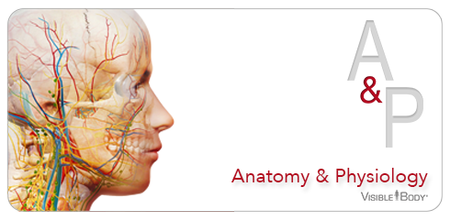What is Evidence-Based Practice (EBP) in Nursing?
Evidence-based practice in nursing is to integrate clinical expertise with the best available research evidence to make informed decisions in nursing care that suit the patients’ situations and preferences (McKibbon, 1998; Sackett et al., 1996).
Key Steps in EBP
| Step | Action |
| 1 | Forming a clinical research question |
| 2 | Searching for evidence |
| 3 | Assessing the evidence |
| 4 | Making clinical decision |
Source
McKibbon, K. A. (1998). Evidence-based practice. Bulletin of the Medical Library Association, 86(3), 396-401.
Sackett, D. L., Rosenberg, W. M., Gray, J. A., Haynes, R. B., & Richardson, W. S. (1996). Evidence-based medicine: What it is and what it isn't. British Medical Journal, 312(7023), 71-72.
Step 1 Forming a Clinical Research Question
Health professionals have to formulate a clinical research question to an identified problem of the patients concerned. Consider the following case:
Case Scenario
You are a professional nurse and receive complaint from a patient about having abdominal pain and nausea after the abdominal surgery. A paralytic ileus has been diagnosed. Now, you are in need of conducting research to determine whether there is evidence to suggest that a simple intervention such as chewing gum postoperatively can help ease the problem.
A PICO framework can be used to help you identify the study group and proposed intervention when formulating the research question:
| Aspect | Question |
| Population (P) | What individual or group do we need to study? |
| Intervention (I) | What is the proposed action / treatment? |
| Comparison (C) | What other action / treatment are we comparing to? |
| Outcome (O) | What do we anticipate as an outcome? |
Research Question
In patients undergoing abdominal surgery, is there evidence to suggest that chewing gum postoperatively compared with not chewing gum can help ease postoperative ileus?
Step 2 Searching for Evidence
Based on the PICO framework, the following keywords can be identified for the search:
| Aspect | Identified Search Phrases | Suggested Keywords |
| Population (P) | Patients undergoing abdominal surgery | abdominal surgery |
| Intervention (I) | Chewing gum | gum chewing |
| Comparison (C) | Not chewing gum | - |
| Outcome (O) | Affecting postoperative ileus | postoperative ileus |
Conducting Search
When carrying out search, make sure you select appropriate sources and employ various search techniques for relevant results
Sources of Evidence
The following databases consist of e-journal articles that are suitable for topics in medicine and healthcare:
- MEDLINE with Full Text (EBSCOhost)
- CINAHL Complete (EBSCOhost)
- Cochrane Library
- PubMed Central (PMC)
- TRIP
- Nursing and Allied Health Collection (Gale)
- PsycARTICLES (ProQuest)
- Internurse (Mark Allen Group)
- Intermid (Mark Allen Group)
Search Techniques
Boolean Operators (i.e. AND, OR, NOT) can be used to conduct and refine search.
| Boolean Operator | Function |
| AND | Narrow the search by linking up keywords |
| OR | Broaden the search for results with either keyword and both keywords |
| NOT | Narrow the search by excluding unwanted keywords |
- To generate results that are more specific, add quotation marks around the keywords for searching as a phrase instead of individual words.
- Use parentheses to group keywords in the search
Examples
“abdominal surgery” AND “postoperative ileus” AND “gum chewing”
(“abdominal surgery” OR “colorectal surgery”) AND “postoperative ileus” AND “gum chewing”
("colorectal surgery" NOT "abdominal surgery") AND “postoperative ileus” AND “gum chewing”
Step 3 Assessing the Evidence
After identifying various useful materials, you can start the evaluation process:
- Evaluate the materials based on a number of criteria, including their currency, relevance and authority
- Evaluating materials is a critical step for health personnel to make correct judgment and decisions for the patients concerned. Thus, when conducting evaluation, please be patient and prudent.
- Remove materials that are not relevant to the case or information that you consider vague or inaccurate
For assessment details, please visit Resource Evaluation page.
Step 4 Making Clinical Decision
After all the materials have been assessed as valid, relevant and accurate, an informed clinical decision can be made by taking into account clinical expertise and the patients’ perspective. The better informed you are, the more likely you are able to provide appropriate treatment and high quality care for the patients.
 |
Call no.: RT42 .E45 2023 |
| ISBN: 9781529779707 Publication Year: 2023 Book |
|
|
This book offers explanation on the concepts and theories of evidence-based practice in nursing and introduces ways in which healthcare professionals can evaluate research evidence to make informed clinical decisions. Practical case studies are also provided. |
|
|
Ellis, P. (2023). Evidence-based practice in nursing (5th ed.). Learning Matters.
|
 |
|
ISBN: 9781975185756 Publication Year: 2023 eBook |
|
|
This book provides a detailed guide on evidence-based practice (EBP) in nursing and healthcare industry. It suggests models in implementing EBP and offers examples in appraising qualitative and quantitative evidence that help make informed decisions on medical care and treatment. |
|
|
Melnyk, B. M., & Fineout-Overholt, E. (2023). Evidence-based practice in nursing and healthcare: A guide to best practice (5th ed.). Wolters Kluwer.
|
 |
Call no.: RT81.5 .B865 2023 |
| ISBN: 9780323826419 Publication Year: 2023 Book |
|
|
This book focuses on both qualitative and quantitative research in nursing, and examines the ethics involved in conducting the research. Key elements such as research problems, hypotheses, populations and samples as well as data collection methods are explained in detail. |
|
|
Grove, S. K., Gray, J., & Burns, N. (2023). Understanding nursing research: Building an evidence-based practice (8th ed.). Elsevier.
|
 |
Journal of Clinical Nursing |
ISSN: 0962-1067 (Print); 1365-2702 (Electronic) eJournal |
|
|
|
|
 |
Journal of Advanced Nursing |
ISSN: 0309-2402 (Print); 1365-2648 (Electronic) eJournal |
|
|
|
|
 |
International Journal of Nursing Studies |
ISSN: 0020-7489 eJournal |
|
|
|
|
 |
Journal of Nursing Management |
ISSN: 0966-0429 (Print); 1365-2834 (Electronic) eJournal |
|
|
|
|
- Anatomy TV. Anatomy & Physiology

Anatomy TV. Anatomy & Physiology is an interactive educational resource on human anatomy. It provides 20 comprehensive modules with 3D models, images, dissection slides, clinical case studies, video clips, information on the impact of aging and quizzes, covering various clinical areas and body systems.


- CINAHL Ultimate (EBSCOhost)

CINAHL Ultimate provides full-text access to most nursing and allied health journals, covering more than 50 nursing specialties. It also offers supplementary information such as quick lessons and evidence-based care sheets.


- Clinical Skills

Clinical Skills is a comprehensive online solution that enables organizations to standardize education and manage competency among their nurses, therapists and other health professionals. By combining 1,700+ evidence-based skills and procedures with competency management functionality, Clinical Skills helps ensure that knowledge and skills are current, and reflective of best practices and the latest clinical guidelines anywhere, anytime.


- ClinicalKey for Nursing

ClinicalKey for Nursing provides evidence-based, clinically relevant information to assist healthcare professionals in accurate diagnosis and treatment. Currently it includes over 3,000 books and drug monographs, around 100 full-text journals, topic pages, practice guidelines, procedure videos and more.



- DynaMed

DynaMed is an evidence-based, clinically oriented reference tool that provides information for point-of-care use by clinicians and healthcare professionals. It includes peer-reviewed information for more than 3,200 topics in a variety of medical specialties, including diseases, treatments, diagnostics, and drugs pertaining to emergency medicine, cardiology, oncology, pediatrics and more.




- Internurse

Internurse is the UK?s largest collection of peer-reviewed nursing content, and home of the British Journal of Nursing. Internurse covers primary and secondary care settings as well as the whole spectrum of specialist nursing practice including cardiology, neuroscience, mental health, palliative care and wound care.

- Lippincott Procedures

Lippincott Procedures offer step-by-step procedure guidance at the point of care, which aims to help nursing professionals to carry out effective care and to deliver improved patient outcomes. It provides over 1,700 evidence-based procedures and skills in nursing, physical therapy and respiratory therapy. These include video clips, images & quick lists with detailed instructions on how to perform procedures including: preparation guidelines, implementation, patient teaching information, equipment and more.



- MEDLINE with Full Text (EBSCOhost)

With more than 1,470 full-text journals, MEDLINE with Full Text provides the authoritative medical information on medicine, nursing, dentistry, veterinary medicine, the health care system, and pre-clinical sciences.


- Nursing and Allied Health (Gale OneFile)

Gale OneFile: Nursing and Allied Health includes full-text titles cited in CINAHL to support specialized care, treatment, and patient management. Nursing and Allied Health helps nursing professionals working in the field as well as students studying a nursing-focused curriculum.


- Nursing Reference Center Plus (EBSCOhost)

Nursing Reference Center Plus is a comprehensive reference tool that provides evidence-based information and other clinical resources for nursing practice, drug information, patient education, continuing education and research at the point-of-care.



- PubMed Central (PMC)

PubMed Central is a free digital repository that archives open access full-text scholarly articles in the area of biomedical and life sciences. Currently it hosts over 5.8 million articles from 2200+ journal publications.



- Trip (Clinical Research Evidence)

This is a free internet resource that allows users to quickly and easily find and use high-quality research evidence to support practice and/or care. Various content types including images, videos, patient information leaflets, educational courses and news are also provided.

- UpToDate

UpToDate is an evidence-based, physician-authored clinical decision support resource which assists clinicians to make the right point-of-care decisions by providing specific answers to clinical questions. It covers over 10,500 clinical and patient information topics across 25 specialties written by more than 6,500 medical experts. Topics include drug information, emergency medicine, palliative care, general surgery and other medical-related areas.




- Visible Body Anatomy & Physiology

Visible Body Anatomy & Physiology is a step-by-step interactive resource which provides introduction to the core anatomical function and physiology of the human body systems. This includes cells and tissue, integumentary, skeletal, muscular, nervous, endocrine, circulatory, lymphatic, respiratory, digestive, urinary, and reproductive systems. It also provides access to more than 500 3D models which can be dissected & studied from any angle and varying zooming levels.




- Visible Body Human Anatomy Atlas

Visible Body Human Anatomy Atlas is an interactive 3D visualization and learning tool that enables healthcare professionals to visualize the human body systems as they would in a lab room. It contains more than 4,600 anatomical structures which covers all the human major organs and systems. It also includes:
- Gross anatomy 3D models including male and female skin models, revised hand anatomy and coronal views of the skull
- Microanatomy 3D models, including eye, ear, blood vessels etc
- 3D dental anatomy such as cusps, fossae; cross-sectional views of an incisor, canine etc; and an interactive, animated model of the upper and lower arches




- Visible Body Physiology & Pathology

Visible Body Physiology & Pathology is a 3D anatomy learning tool that enables students, clinicians and researchers to explore how the core processes of the human body work. It covers nearly 6,000 3D anatomy models, 50 physiology topics and over 50 conditions in cardiovascular, respiratory, renal, gastrointestinal, and musculoskeletal systems. Additionally, it provides a 3D dissectible beating heart simulation module and 30 quizzes test knowledge of physiological processes and pathologies.



Developed by the Medical Center Library of Duke University, the webpage offers step-by-step interactive tutorial videos about evidence-based practice in healthcare that span across 7 modules, from acquiring sources of evidence to appraising them and applying them to relevant cases.
As a unit of the Department of Primary Care of the Oxford University, the Centre provides professional information of evidence-based medicine and a list of resources to assist health professionals in making informed choices. These resources include PICO guides and critical appraisal worksheets.
| A | C | D |
| E | G | H |
| I | M | N |
| O | P | S |
| V | ||
| Subject Area | Subclass |
| Nursing |
RT1 - 120 |
| Nursing – Specialties in nursing |
RT89 - 120 |
| Public aspects of medicine – Public health. Hygiene. Preventive medicine |
RA421 - 790.95 |
| Pediatrics – Nursing of children. Pediatric nursing |
RJ245 - 247 |
| Human anatomy – General |
QM1 - 511 |
| Physiology – General |
QP1 - 345 |
| Therapeutics. Pharmacology |
RM1 - 950 |
| Pharmacy and materia medica |
RS1 - 441 |



